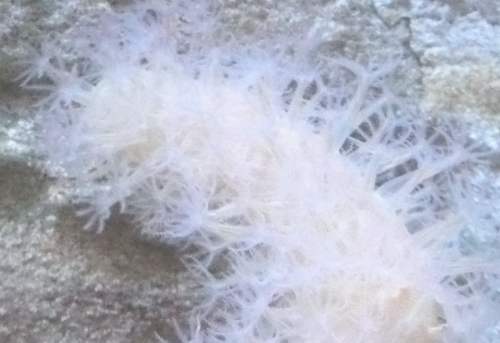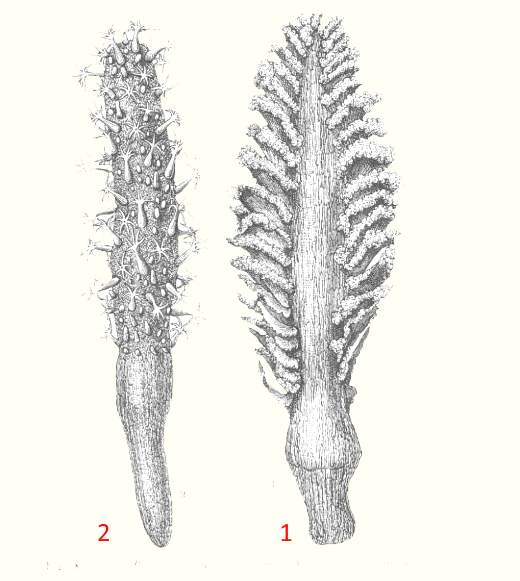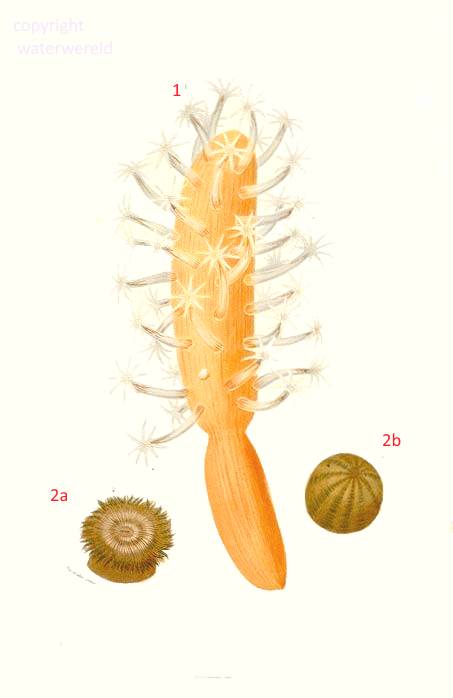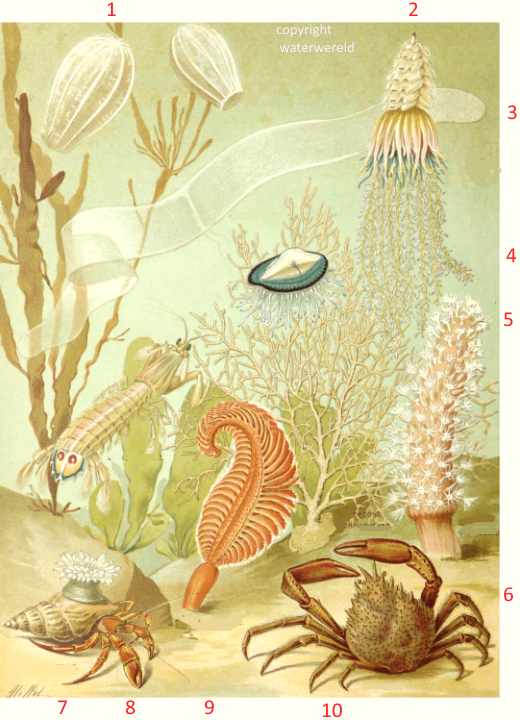finger shaped sea pen or Veretillum cynomorium
This animal lives on the sandy bottom of the indian ocean and red sea. Its active at night when it catches plankton. During day time it digs itself into the sand by bending: Veretillum cynomorium uses the pressure of water to inflate and erect itself from the sandy bottom.
the nerveus system of Veretillum cynomorium
The nervous system of Veretillum consists of ectodermal, mesogloeal and entodermal plexus. The separation in different nerve-plexus guarantees the regulation of many patterns in the behavior of the individual zooids.
the distribution of Veretillum cynomorium
The finger shaped sea pen can be found in the sandy bottoms of the Indian ocean and red sea at an depth of about 20 meters. But also in the golf of Biskaye and mediterranean sea.
enemies of the Veretillum cynomorium
Sea stars are the biggest threat for the finger shaped sea pen. Sea pens bury into the sediments of the sea bottom, and if stimulated by a seastar the pen will sometimes inflate, expand and attempt to dislodge the predator

Detail

1 Pteroeides griseum
2 Veretillum cynomorium
bron source:Manuel d’actinologie ou de zoophytologie. Paris; F.G. Levrault,1834-1836.

1 Pteroeides griseum
2 Veretillum cynomorium

1 finger shaped sea-pen or Veretillum cynomorium
2a en 2b Calliactis parasitica of Actinia parasiticain in food collecting and retracted state. Calliactis parasitica is not related to Veretillum.

Sea Life, by Lemercier et Cie., in 1898.
1 Beroe or Beroe cucumis
2 physophore nusonerne
3 venus girdle
4 by-the-wind-sailor or Velella
5 finger shaped sea pen or veretillum cynomorium
6 the European spider crab, spiny spider crab or Maja squinado
7 Hermit crab
8 mantis shrimp
9 Gorgone rose or Eunicella verrucose
10 red sea feather or pennatula rubra